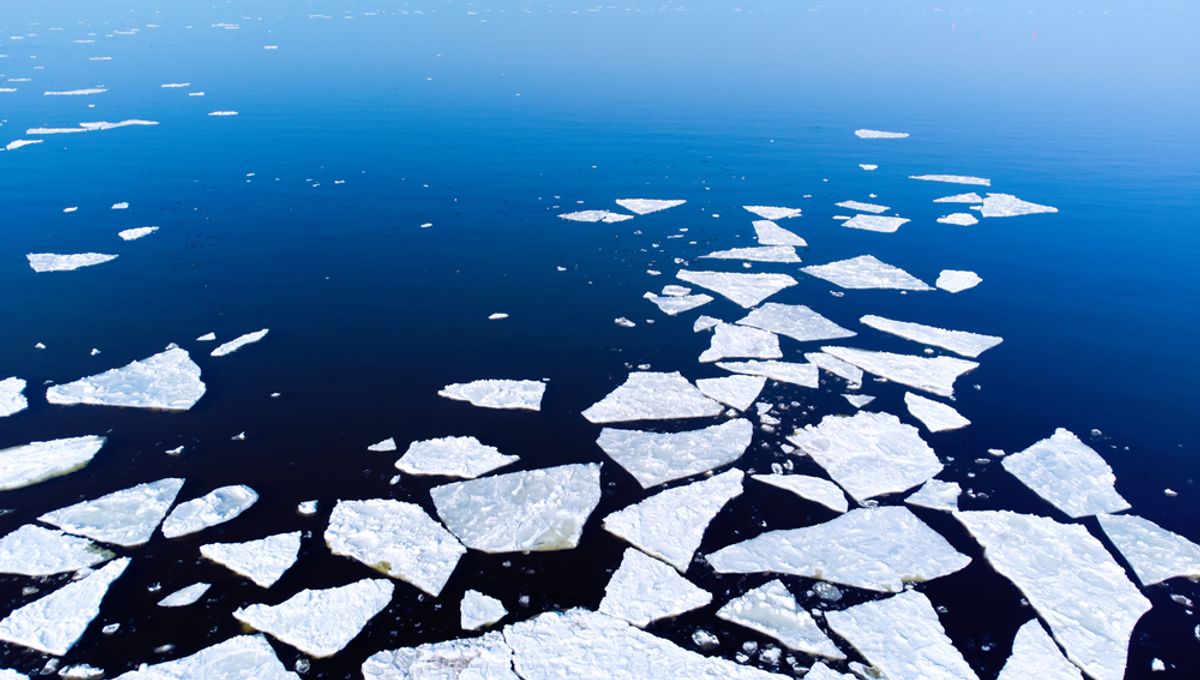
The amount of sea ice surrounding Antarctica fell to the lowest level ever detected in the modern era this Southern-Hemisphere summer. This is the second year in a row that the record for the minimum sea ice extent has been broken, although it’s still too early to say if this downward trend is likely to continue.
Scientists have been tracking Antarctic sea ice levels using satellites since 1979 and are used to observing massive fluctuations in coverage as the ocean freezes and melts at different times of the year. Typically, sea ice reaches a maximum extent of roughly 18.5 million square kilometers (7 million square miles) in September, before dropping to around 2.5 million square kilometers (one million square miles) in late February.
However, on February 21, data showed that just 1.79 million square kilometers (691,000 square miles) of sea ice remained around the Antarctic coastline, according to the National Snow and Ice Data Center (NSIDC). This is around 40 percent lower than the average between 1981 and 2010 and is 136,000 square kilometers (52,500 square miles) less than the previous record low, which was detected on February 25, 2022.
The third lowest sea ice extent was recorded in 2017, while 2018 saw the fourth smallest frozen area. However, despite this recent downturn, scientists say that trends over such a short time period are not necessarily indicative of an overall pattern.
Whether or not Antarctic sea ice is vanishing is therefore still a matter of debate, especially when one considers that record high levels were recorded in 2013 and 2015. Overall, frozen coverage dropped by around 1 percent per decade between 1981 and 2010, indicating that the ice around the southern pole is far more resilient than that in the Arctic, which is disappearing at an alarming rate.
“Antarctica’s response to climate change has been different from the Arctic’s,” explained Ted Scambos from the Cooperative Institute for Research in the Environmental Sciences (CIRES) in a statement. “The downward trend in sea ice may be a signal that global warming is finally affecting the floating ice around Antarctica, but it will take several more years to be confident of it.”
Should this trend continue, however, the effects could be catastrophic. According to Julienne Stroeve from the NSIDC, “the sea ice helps to buffer large floating ice shelves and major outlet glaciers such as Pine Island and Thwaites, and if these glaciers begin a more rapid runaway loss of land ice, it could trigger a dramatic increase in sea level rise rates before the end of this century.”
Sea ice also contributes to the albedo effect, whereby light surfaces reflect the Sun’s rays back into space and prevent the planet from warming. As the ice melts, however, the dark ocean beneath is exposed and absorbs these rays, thereby accelerating global temperature increases.
What happens in Antarctica, then, certainly doesn’t stay in Antarctica.
Source Link: Antarctic Sea Ice Reaches Record Low For Second Consecutive Year